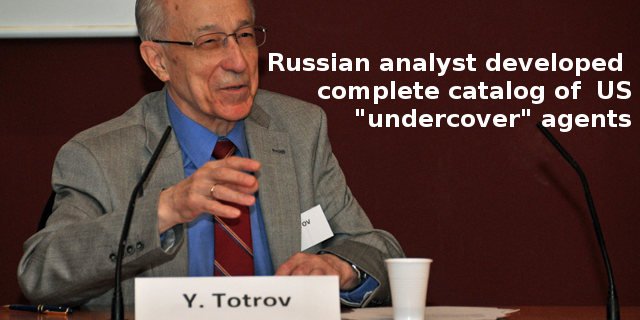How the KGB Found CIA Agents
An illustration of complex, specified information (CSI) in the world of foreign intelligence agencies Mathematician William Dembski introduced the concept of complex, specified information: “Given an event, object, or structure, to convince ourselves that it is designed we need to show that it is improbably (i.e. complex) and suitably patterned (i.e. specified).”
Mathematician William Dembski introduced the concept of complex, specified information: “Given an event, object, or structure, to convince ourselves that it is designed we need to show that it is improbably (i.e. complex) and suitably patterned (i.e. specified).”
The concept, which has been controversial with respect to the universe as a whole, can be conveniently illustrated on a smaller scale in the events of our time. Consider the case of the phantom Soviet moles.
During the Cold War, the Soviet Union’s KGB seemed to have little difficulty identifying CIA agents in the field. After the Berlin Wall fell in 1989, ending the Soviet Union, CIA directors hoped to discover the identities of the treacherous agents within their own system who fingered their colleagues, in some cases endangering their lives.
One person was primarily responsible. But he did not work for the CIA. Yuri Totrov worked for the CIA’s opposite number, the KGB. He theorized that CIA agents would likely show the same patterns in lifestyles so he combed the files of the Soviet Bloc, looking for patterns in the lives of known agents. And after much study, he got lucky. He came up with 26 “unchanging indicators”:
Thus one productive line of inquiry quickly yielded evidence: the differences in the way agency officers undercover as diplomats were treated from genuine foreign service officers (FSOs). The pay scale at entry was much higher for a CIA officer; after three to four years abroad a genuine FSO could return home, whereas an agency employee could not; real FSOs had to be recruited between the ages of 21 and 31, whereas this did not apply to an agency officer; only real FSOs had to attend the Institute of Foreign Service for three months before entering the service; naturalized Americans could not become FSOs for at least nine years but they could become agency employees; when agency officers returned home, they did not normally appear in State Department listings; should they appear they were classified as research and planning, research and intelligence, consular or chancery for security affairs; unlike FSOs, agency officers could change their place of work for no apparent reason; their published biographies contained obvious gaps; agency officers could be relocated within the country to which they were posted, FSOs were not; agency officers usually had more than one working foreign language; their cover was usually as a “political” or “consular” official (often vice-consul); internal embassy reorganizations usually left agency personnel untouched, whether their rank, their office space or their telephones; their offices were located in restricted zones within the embassy; they would appear on the streets during the working day using public telephone boxes; they would arrange meetings for the evening, out of town, usually around 7.30 p.m. or 8.00 p.m.; and whereas FSOs had to observe strict rules about attending dinner, agency officers could come and go as they pleased. Jonathan Haslam, “How to explain the KGB’s amazing success identifying CIA agents in the field?” at Salon (2015)
Using a public telephone box at a time when most mid-level employees had a phone in their office might certainly attract attention, though espionage wouldn’t be the only possibility. At any rate, Totrov produced masses of information on CIA agents and became known among his peers as the “shadow director of personnel at CIA.” As Haslam sums up, once Totrov had enough evidence that CIA agents were treated differently by the American bureaucracy from other foreign service personnel, he needed only to “follow through schematically and draw out the pattern.”
Specified complexity? The complexity was the sheer number and variety of Americans working for their government abroad. The specification was that some of these individuals were treated differently but not randomly so; rather, according to a specific pattern. And the pattern was not merely mechanical repetition. It seemed to be a choice made by intelligent beings who knew that there was something different about those individuals. The most likely difference, that they were CIA agents, proved correct for Totrov.
The senior American bureaucrats who treated CIA agents differently from others were intelligent agents even though they were behaving unwisely. Intelligence includes the ability to assess and act on information; wise decisions do not necessarily follow.
Hat tip: Eric Holloway
See also: Does information theory support design in nature (Eric Holloway)
and
Human intelligence as a halting oracle Jonathan Bartlett proposes to model the human mind as a halting oracle. Eric Holloway
